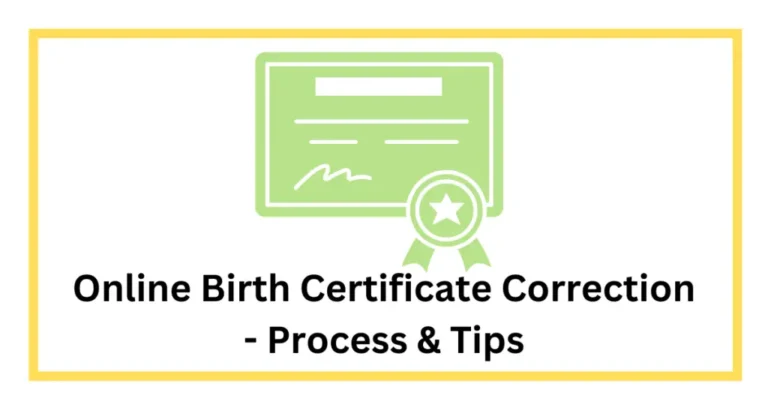Discover the key strategies for a successful rebranding! Learn how to modernise design, update your mission, and communicate effectively.
Introduction
Rebranding your company is an exciting and challenging venture that involves updating various aspects, such as design, mission, and name. However, before embarking on this transformative journey, it is crucial to carefully consider your strategy and motivation for rebranding. Engaging your current customer base throughout the process is essential to ensure a seamless transition and maintain their loyalty. In this article, we will explore the concept of rebranding for small business owners and discuss how it can be achieved without losing your audience and disappointing existing customers. Additionally, we will gather insights and valuable tips from five successful business owners who have navigated the rebranding process with finesse.
What Does a Rebrand Involve?
In the ever-evolving business landscape, a rebrand can be a strategic move to revitalise your company’s image and strengthen its position in the market. A rebrand involves a thoughtful and comprehensive process of modernising design, updating mission and vision, and sometimes even renaming your organisation. Let’s explore each element of a rebrand and understand why allocating sufficient time and resources to create a well-planned strategy is crucial.
Modernising Design:
Over time, your business may have outgrown its original design, and a refresh becomes essential to stay relevant and appealing to your target audience. Design elements such as your company’s logo, email templates, brand colours, website, and business cards play a significant role in shaping your brand identity. Hence, a comprehensive plan should be crafted to ensure a consistent and cohesive visual representation of your brand.
To modernise your design, start by evaluating whether your current design elements align with your brand’s values and personality. Consider the evolving tastes and preferences of your audience. Engaging with professional designers and gathering feedback from customers can help you identify areas for improvement. The goal is to strike a balance between retaining the essence of your brand while incorporating fresh and contemporary elements that resonate with your audience.
Updating Mission and Vision:
A successful business remains adaptive and responsive to changes in the market and customer preferences. As your company grows and expands its offerings, it’s essential to review and update your mission and vision to align with your current direction and future aspirations.
Evaluate how your business has evolved since its inception and identify any new opportunities that have emerged along the way. For instance, if you started with a single product but now offer a broader range of popular items, your mission and vision should reflect this growth and diversification. Keep a close eye on how your customers engage with your brand and be prepared to adapt your strategy accordingly.
Renaming Your Organisation:
In certain cases, a rebrand may involve renaming your organisation to better reflect its current identity or accommodate changes such as mergers or acquisitions. A business name carries significant weight, as it serves as the primary identifier for your brand. Therefore, any decision to change it should be approached with careful consideration.
When considering a name change, ensure that the new name aligns with your core mission and values. It should also be adaptable enough to accommodate future growth and expansion plans. Additionally, conduct market research and gather feedback from stakeholders to gauge their response to the potential name change. Transparency and communication are essential throughout this process to maintain trust and confidence among your customers and partners.
What to Consider During a Rebrand
Rebranding your business can be a powerful tool to add value, increase market share, and enhance customer engagement, setting you apart from your competitors. However, it is a complex and multifaceted undertaking that demands careful planning, thoughtful strategy, and in-depth research. To ensure a successful rebrand that resonates with your audience and maintains customer loyalty, here are essential considerations to keep in mind:
Know Why You Are Rebranding:
Before embarking on a rebranding journey, it is vital to have a compelling reason to make the change. Understand the driving force behind your decision to rebrand and how it aligns with your business goals and growth plans. Whether it’s to encourage expansion, clarify services, or signify a leadership transition, a clear purpose will guide your rebranding efforts and increase the likelihood of success.
Rebranding should not be taken lightly; it is a significant undertaking that affects various aspects of your business. Consider the time, resources, and work required, and assess whether the potential return on investment justifies the effort. If the rebrand isn’t essential, explore other avenues to grow your business that might be more suitable.
Plan a Comprehensive Strategy Before You Begin:
Rebranding is far more than just changing your company name or logo; it involves a holistic approach that touches various aspects of your business. Develop a comprehensive strategy that outlines the changes to be made, the marketing initiatives, web presence, and how it aligns with your mission and priorities.
Acknowledge the complexities involved and anticipate potential challenges in the process. Assign designated team members to handle different areas of the rebrand, from design decisions to public communication, to ensure a smooth and coordinated implementation.
Anticipate Questions and Concerns:
Effective communication with customers is paramount during a rebrand to maintain trust and retain your existing client base. Anticipate the questions and concerns your customers might have about the changes and provide clear, straightforward answers to address any uncertainties.
Involve your team and seek their buy-in to ensure they understand and can effectively communicate the goals and improvements brought about by the rebrand. Employees are vital in maintaining relationships with customers, so their support and understanding are crucial.
Publicise Your Rebrand:
Don’t keep your rebranding efforts hidden. Communicate your rebrand as publicly as possible to increase awareness and understanding among your customers and the general public. Use social media, press releases, and media contacts to spread the message and generate interest.
Sharing your rebrand publicly can lead to increased traffic to your website and renewed interest in your company, making it easier for customers to find you in search engines.
Prepare Your Existing Customers:
Make an effort to ensure that your rebranding process has minimal impact on your existing clients. Be transparent and provide a clear plan for how the changes will be implemented. Focus on maintaining excellent service during the rebranding phase to retain customer loyalty.
If you are narrowing your client acquisition focus, reassure your existing clients that they remain a priority. Communicate the changes clearly and give them the necessary support to continue their association with your brand seamlessly.
Steps to Take Before You Rebrand Your Business
Rebranding your business is a crucial marketing endeavour that requires a well-thought-out strategy, a step-by-step approach, and a willingness to test and adapt. The key to a successful rebrand lies in thorough preparation and a clear understanding of your brand’s identity. Here are nine essential steps to rebrand your business the smart way:
Define Your Brand’s Identity:
Begin by gaining a comprehensive understanding of your brand’s current identity and its desired future state. Evaluate your company’s mission, core values, and target audience. Define what sets your brand apart and the unique value it offers to customers.
Conduct Market Research:
Research is essential to gauge your competitors and understand the needs and preferences of your target audience. Dive into your competitors’ strategies and analyse the pain points and preferences of your customers. This data will serve as the foundation for your rebranding strategy.
Develop a Rebranding Strategy:
Based on the insights from your market research, create a well-defined strategy that outlines your rebranding goals, target audience, and messaging. Your strategy should articulate the changes you intend to make and how they align with your brand’s mission and values.
Create a New Visual Identity:
A strong visual identity is a crucial aspect of rebranding. Develop a new logo, color scheme, and typography that resonate with your new brand identity and effectively appeal to your target audience. Ensure that your visual elements are consistent across all platforms.
Update Your Website:
Your website is often the first point of contact for potential customers. Therefore, it should reflect your new brand identity and messaging. Revamp your website design, update content, and ensure seamless navigation to enhance user experience.
Communicate the Rebrand to Your Stakeholders:
Open communication is vital during the rebranding process. Keep your employees, customers, and partners informed about the changes and the reasons behind them. Address any concerns and reinforce the value and benefits of the rebrand.
Implement the Rebrand:
Once your rebranding strategy is finalised, roll out the new visual identity and messaging across all marketing materials. Ensure consistency across social media profiles, advertising campaigns, packaging, and any other customer touchpoints.
Monitor and Measure the Results:
Track the impact of the rebrand on your business by analysing metrics such as website traffic, social media engagement, and sales. Regularly assess the success of your rebranding efforts and use the data to make data-driven decisions.
Continuously Improve:
Rebranding is an ongoing process that requires continuous monitoring and improvement. Stay agile and responsive to market feedback and customer preferences. Be prepared to make adjustments to your rebranding strategy as needed to achieve optimal results.
Rebranding a business may seem daunting, but with a well-crafted strategy and careful execution, it can pave the way for staying relevant and driving business growth.
Strategies for a Smooth Transition
Rebranding is a significant undertaking that requires careful planning and execution to ensure a smooth transition and successful transformation of your business. Whether you’re looking to stand out in a saturated market or attract a new audience, implementing the right strategies can make all the difference. Here are some key strategies to consider when revamping your brand:
1. Focus On Your Unique Selling Point
One of the essential aspects of rebranding is identifying and emphasising your unique selling point (USP). Your brand identity should revolve around your main product or service, and it should reflect the core message of your business indirectly. In a competitive market, differentiation is key. Highlight what sets you apart from your competitors and let your USP shine through your new branding strategy.
2. Hire an Expert
Bringing in a brand consultant with expertise in your industry can be invaluable during the rebranding process. Business owners and executives may have biases that can cloud their judgement, so having an objective third party can provide fresh insights and ideas. An experienced brand consultant will be familiar with consumer preferences, industry trends, and competitor practices, making them an indispensable asset in strategising and executing your brand’s revamp.
3. Expand Your Audience
Take the opportunity to explore new markets and expand your audience during the rebranding process. Thoroughly study consumer profiles and use data and research to identify potential target market segments. However, remember to continue catering to the preferences of your existing client base to retain their loyalty and avoid alienating current customers.
4. Strategise the Announcement
The announcement of your rebranding should be well-planned and strategic. Customers are primarily interested in how the rebranding will affect them, so communicate the benefits clearly. Utilise influencer marketing or your social media platforms to build anticipation and explain the reasons behind the rebranding. This will help your customers understand and embrace the change.
5. Change Social Media Presence
In today’s digital age, your online presence is crucial for brand visibility. Update your social media look to align with your new brand identity. Use different fonts, designs, and a cohesive theme that reflects your business values. If you’re changing your business name, ensure that the new domain is available for all your social media accounts.
6. Change Your Logo
The logo is the face of your brand and plays a pivotal role in the rebranding process. Changing your logo can instantly convey the transformation to your customers. Work with an expert graphic designer to create an impactful and visually appealing logo that aligns with your new identity. Update all marketing materials, packaging, and promotional items with the new logo to maintain consistency.
7. Create New Advertisements
New advertisements are essential to communicate your rebranding message effectively. Ensure that your ads convey the reason behind the revamp and target your desired audience. Utilise various channels such as social media, billboards, and television to reach a broader demographic and expand your customer base.
8. Eliminate Traces of Your Old Brand
To give your business a fresh start, eliminate all traces of your old brand identity. Leaving outdated elements during the transition can make your business look unprofessional and confuse customers. Revamp all aspects of your business, including storefronts, websites, packaging, and promotional materials, to create a cohesive and polished new image.
Conclusion
In conclusion, rebranding is a powerful tool that can revitalise your business and help it stay competitive in a dynamic market. By focusing on your unique selling point, hiring an expert, and expanding your audience, you can achieve a seamless transition and attract new customers. A important decision that necessitates meticulous preparation and execution is changing the name of a company. Additionally, carefully strategising the announcement, updating your social media presence, and changing your logo will reinforce the new brand identity. Creating new advertisements and eliminating traces of the old brand will ensure a professional and cohesive image. With a well-executed rebranding strategy, your business can thrive and connect with a broader audience while maintaining the loyalty of existing customers.
FAQs
How do you transition to a new company name?To transition to a new company name, follow these steps:
|
How do you announce a rebranding?To announce a rebranding, use various communication channels such as social media, press releases, and email newsletters to inform customers and stakeholders about the upcoming changes and the reasons behind the rebrand. Emphasise the benefits of the rebranding for the audience and ensure a clear and consistent message throughout the announcement. |
Why do companies change their company name?Companies change their company name to reposition themselves in the market, reflect a shift in their products or services, align with a new brand identity, or resolve trademark issues. A new name can also help attract a different target audience or distance the company from negative associations. |
Also, Read:
- How Do I Apply For A Name Change
- Guide For GST Registration Process Online
- Change Your Company/Business Name










